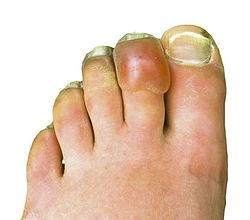Frostbite, a term steeped in history, originally described the chilling effects of extreme cold on human skin. Derived from the Old English “forstbiten,” it paints a vivid picture of frost’s relentless grip. Over time, the meaning of Frostbite has expanded beyond its icy origins. In the cannabis lexicon, Frostbite is a strain that stands out for its crystalline, #1excludeGlossary trichomes that blanket the buds, giving it an appearance as if kissed by winter itself. This strain is renowned for its robust THC levels and invigorating effects, making it a sought-after choice for those in the cannabis community who crave a potent and memorable experience. As the cannabis industry evolves, Frostbite has become a symbol of excellence and potency, capturing the attention of enthusiasts who prioritize quality and innovation. [Source: Oxford English Dictionary, Cannabis Now]
Frostbite is an injury to skin or other living tissue that is allowed to freeze, commonly affecting the fingers, toes, nose, ears, cheeks and chin. Most often, frostbite occurs in the hands and feet, often preceded by frostnip, a paling or reddening in an area of skin as its blood vessels constrict that tingles, feels very cold, or simply feels numb. This may be followed by clumsiness and white or bluish, waxy-looking skin. Swelling or blistering may occur following treatment. Complications may include hypothermia or compartment syndrome.
| Frostbite | |
|---|---|
| Other names | Frostnip |
 | |
| Frostbitten toes two to three days after mountain climbing | |
| Specialty | Dermatology, emergency medicine, orthopedics |
| Symptoms | Numbness, feeling cold, clumsiness, pale color |
| Complications | Hypothermia, compartment syndrome |
| Types | Superficial, deep |
| Causes | Temperatures below freezing |
| Risk factors | Alcohol, smoking, mental health problems, certain medications, prior cold injury |
| Diagnostic method | Based on symptoms |
| Differential diagnosis | Frostnip, pernio, trench foot |
| Prevention | Avoid cold, wear proper clothing, maintain hydration and nutrition, stay active without becoming exhausted |
| Treatment | Rewarming, medication, surgery |
| Medication | Ibuprofen, tetanus vaccine, iloprost, thrombolytics |
| Frequency | Unknown |
People who are exposed to low temperatures for prolonged periods, such as winter sports enthusiasts, military personnel, and homeless individuals, are at greatest risk. Other risk factors include drinking alcohol, smoking, mental health problems, certain medications, and prior injuries due to cold. The underlying mechanism involves injury from ice crystals and blood clots in small blood vessels following thawing. Diagnosis is based on symptoms. Severity may be divided into superficial (first and second degree) and deep (third and fourth degree). A bone scan or MRI may help in determining the extent of injury.
Prevention consists of wearing proper, fully-covering clothing, avoiding low temperatures and wind, maintaining hydration and nutrition, and sufficient physical activity to maintain core temperature without exhaustion. Treatment is by rewarming, immersion in warm water (near body temperature), or body contact, and should be done only when a consistent temperature can be maintained so that refreezing is not a risk. Rapid heating or cooling should be avoided since it could potentially cause burning or heart stress. Rubbing or applying force to the affected areas should be avoided as it may cause further damage such as abrasions. The use of ibuprofen and tetanus toxoid is recommended for pain relief or to reduce swelling or inflammation. For severe injuries, iloprost or thrombolytics may be used. Surgery, including amputation, is sometimes necessary.
Evidence of frostbite occurring in humans dates back 5,000 years. Evidence was documented in a pre-Columbian mummy discovered in the Andes. The number of annual cases of frostbite is unknown. Rates may be as high as 40% a year among those who mountaineer. The most common age group affected is those 30 to 50 years old. Frostbite has also played an important role in a number of military conflicts. Its first formal description was in 1813 by Dominique Jean Larrey, a physician in Napoleon's army, during its invasion of Russia. Frostbite reports were largely military until the late 1950s.
English
Etymology
From frost + bite.
Pronunciation
Noun
frostbite (countable and uncountable, plural frostbites)
- An injury suffered as a result of freezing of some part of the body, typically fingers, toes or the nose.
Coordinate terms
- chilblain
- frostnip
Translations
Verb
frostbite (third-person singular simple present frostbites, present participle frostbiting, simple past
... Read More




